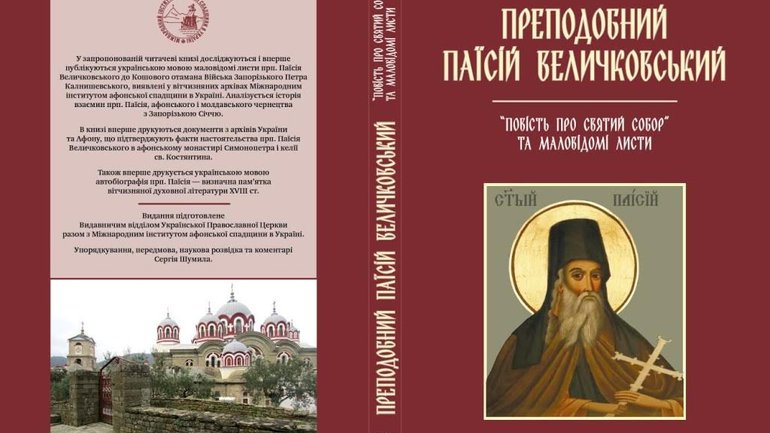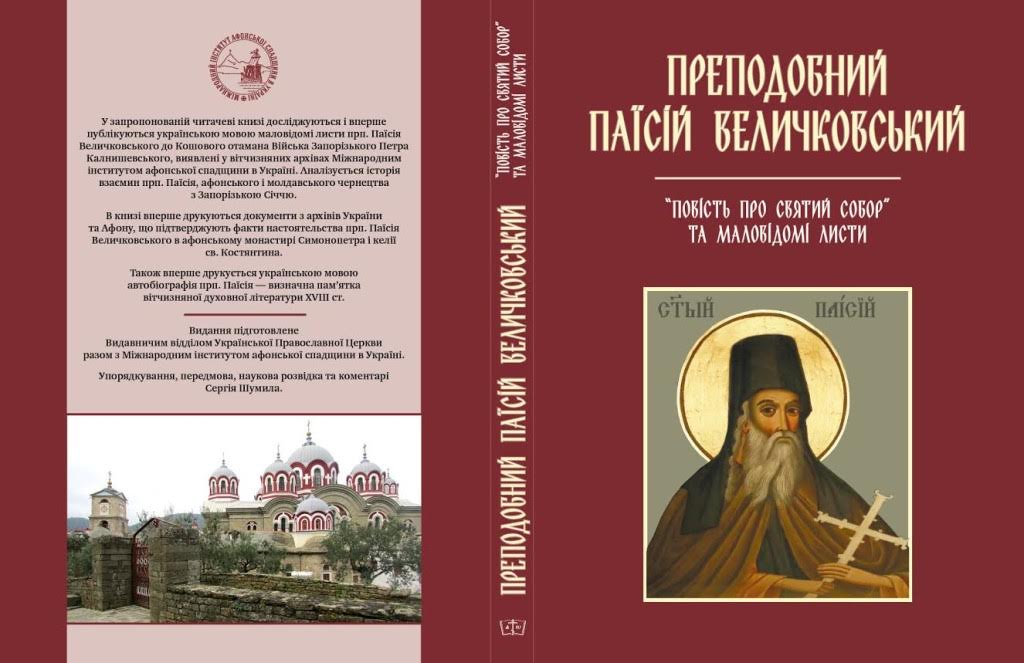“There was a Ukrainian monastery on the Mount Athos” - work of Paisius Velichkovskyy presented in Kyiv

On January 24, Kyiv hosted a presentation of two scientific papers by researcher Serhiy Shumylo “St. Paisius Velichkovskyy ‘The Story of the Holy Council’ and unknown letters” and “Elder Ioann Vyshenskyy: Mount Athos ascetic and Orthodox writer-polemyst.”

The scholar is a renowned expert in Athos heritage associated with Ukraine. He spoke about his personal research interests, the trip to the Holy Mountain and the Ukrainian heritage there. So, in the book about Paisius Velichkovskyy a number of previously unknown letters translated into modern Ukrainian were published, based on which one can find evidence of discovery of the Ukrainian representation on Mount Athos.
An ancient Simonopetra Monastery was given to “Little Russian Paisius and Little Russian brotherhood,” as he wrote in a letter to Metropolitan Arseniy (Mohylyanskyy) of Kyiv. “This is the evidence that a purely Ukrainian monastery was formed at the Holy Mountain,” said Serhiy Shumylo.
Based on the documents studied, Serhiy Shumylo destroys the myth of archpriest Serhiy Chetvierikov about persecution of St. Paisius by Zaporizhzhia Cossacks. Instead, he argues, the Cossacks were the main sponsors of the monastery. Details about this can be found in another study by the same author “Venerable Paisius Velichkovsky and Zaporizhzhia Sich.”
The novel “Elder Ivan Vyshenskyy: Mount Athos and Orthodox ascetic writer-polemist" was also presented. The author not only described major events in the life of an old man, but also gave examples of different interpretations of his personality. Thus, Soviet propaganda referred to him as an example of “a revolutionary fighting for establishment of social justice.” This portrait affected the development of his intellectual heritage, as Ivan Vyshenskyy was further perceived solely as a polemicist, and not a monk or an old man.
As reported, last summer the Holy Synod of the Ukrainian Orthodox Church glorified Ivan Vyshenskyy among saints, although currently there are no his remains, as in the XVIII on Mount Athos there was not tradition to mark the bodies of the deceased, unlike at Kyiv-Pechersk Lavra. There is even an assumption that the tradition to put the name of the newly deceased came to Mount Athos from the Kyivan Lavra. The author also touched upon an interesting topic – the criteria of holiness of the relics. On Athos, a person was believed saint if their remnants were fully decomposed, while at Kyiv-Pechersk Lavra it was quite the opposite: incorruptibility was a sign of holiness.
Many other interesting facts were discussed in the lecture, and the author advised all those interested to read the works being presented. It was reported by Dmytro Horevyy.









